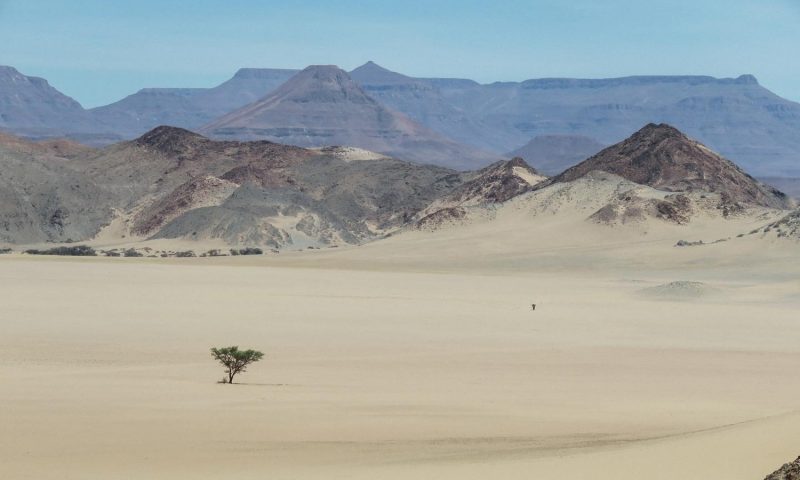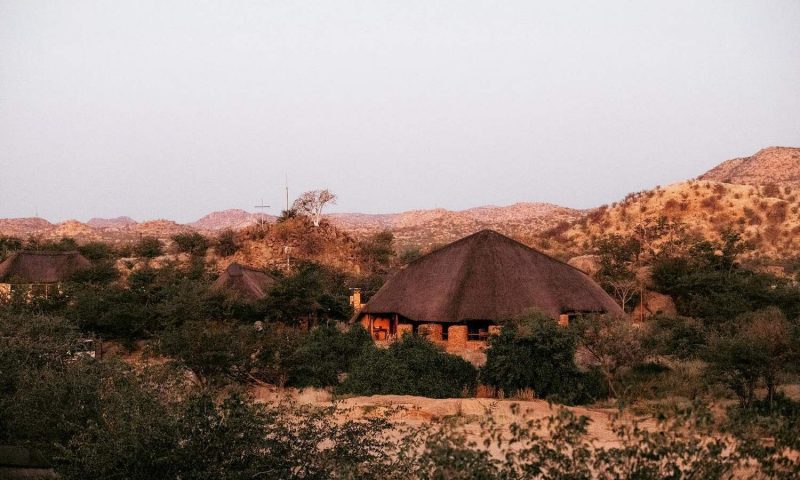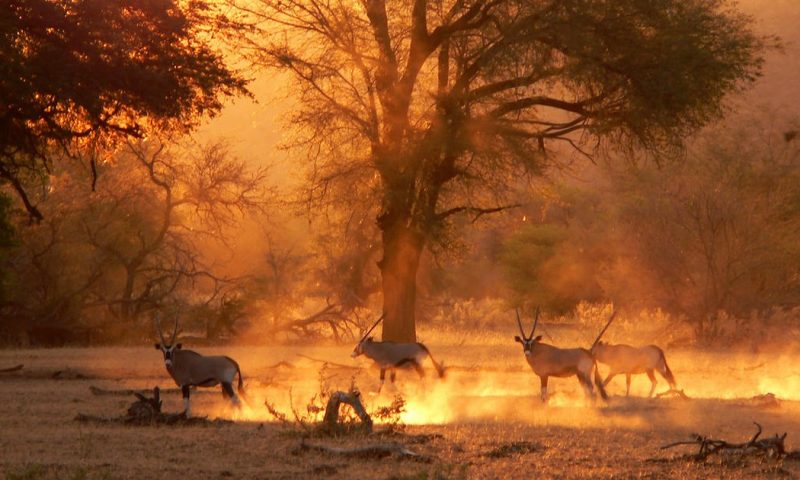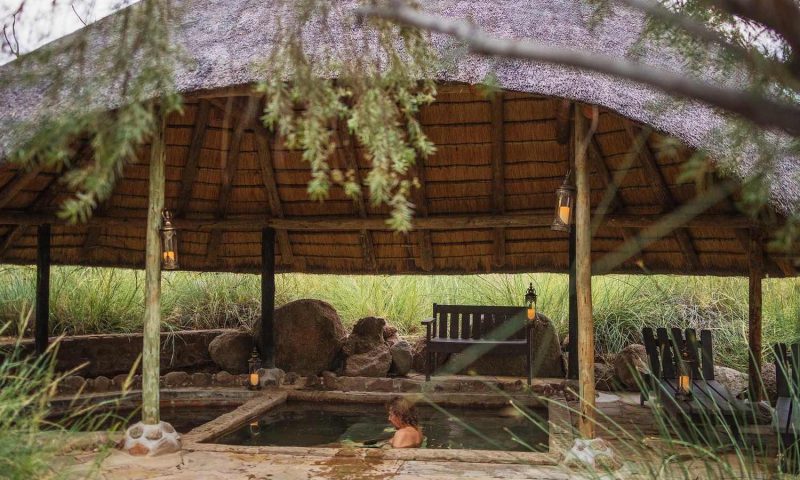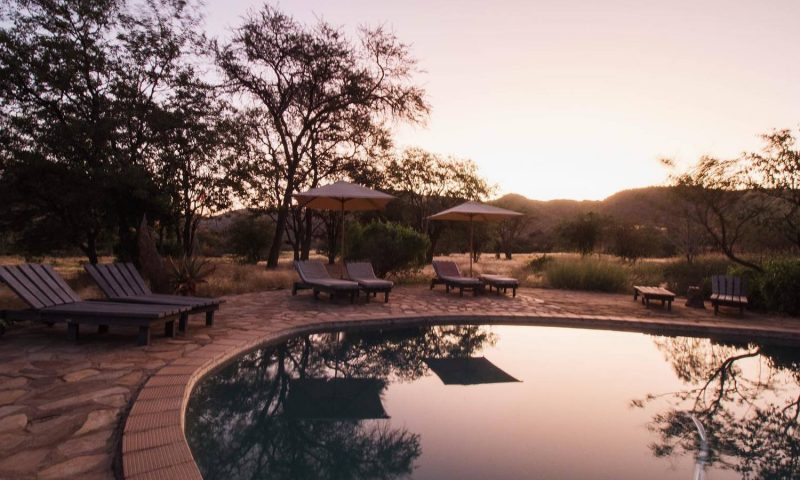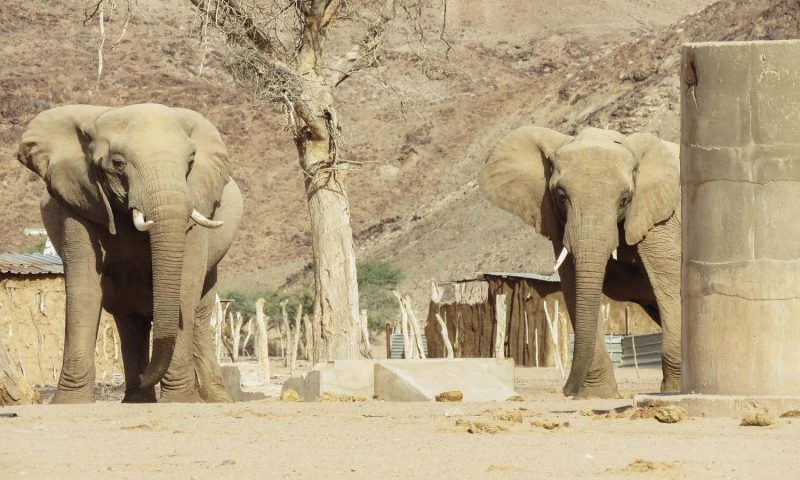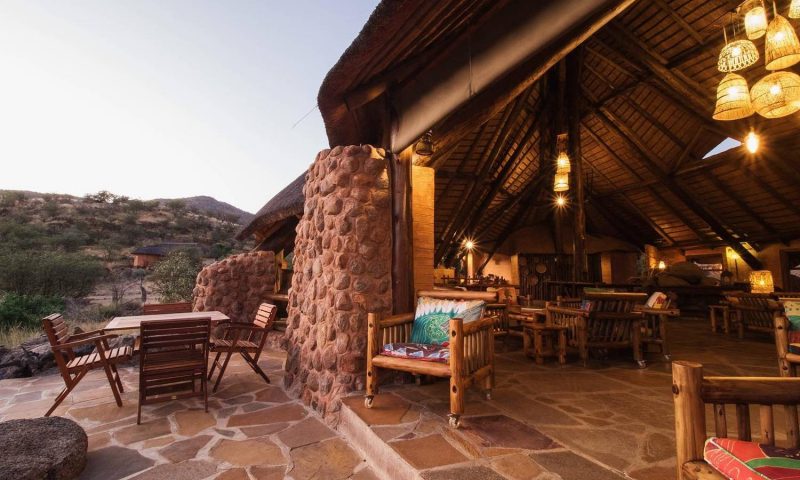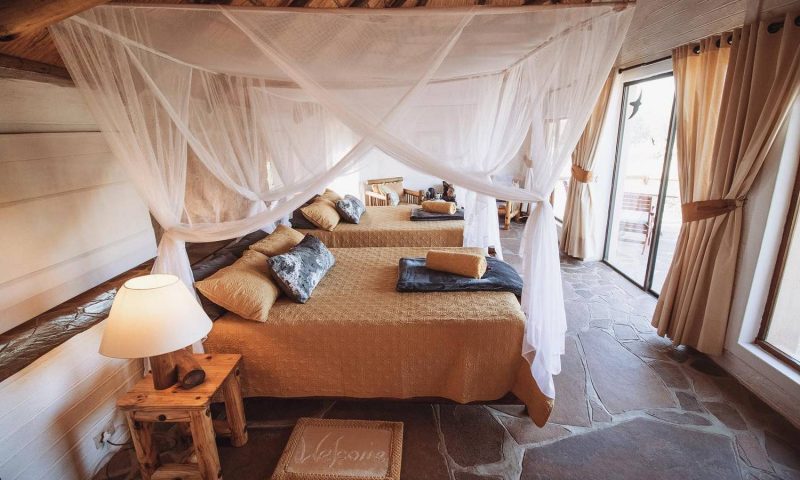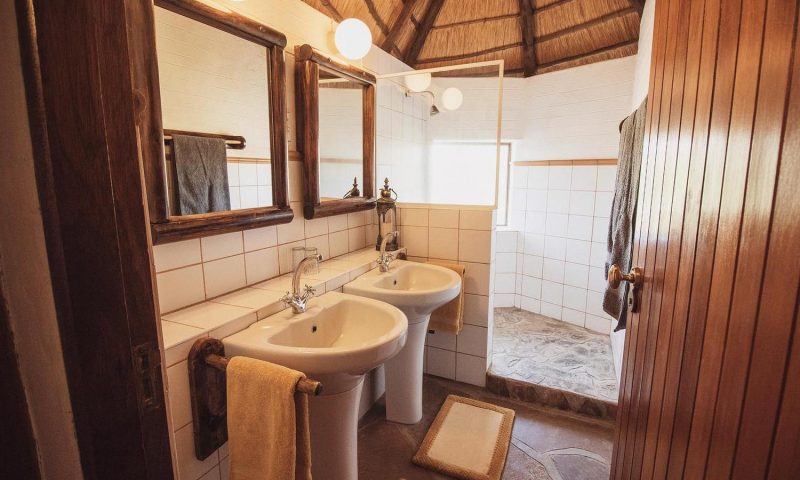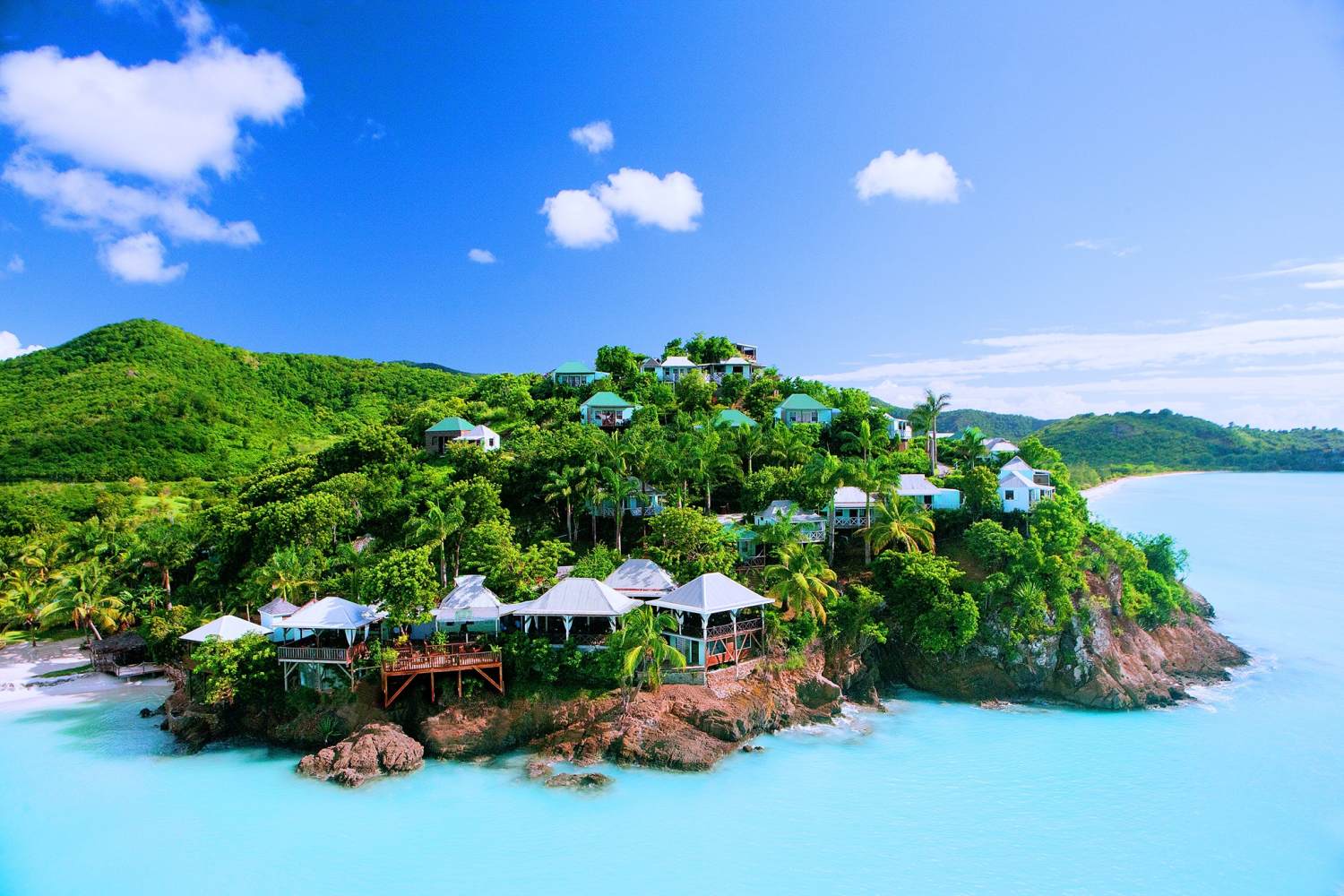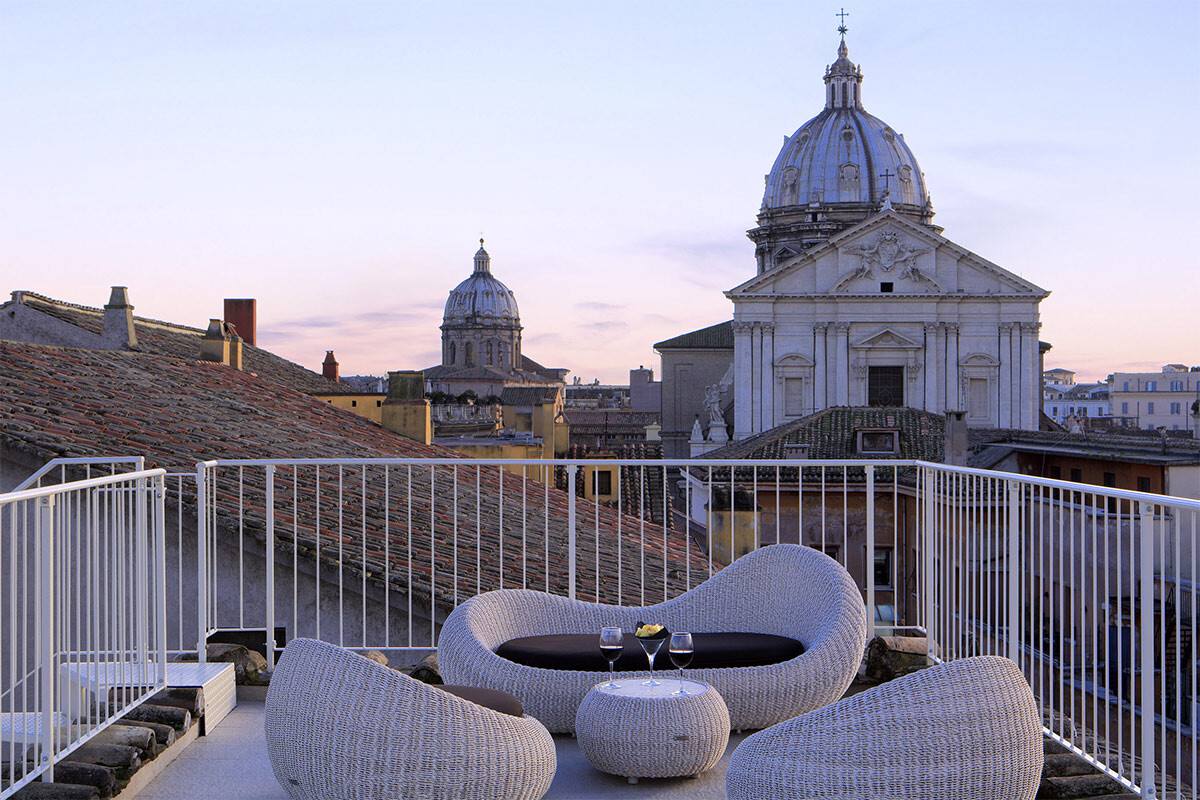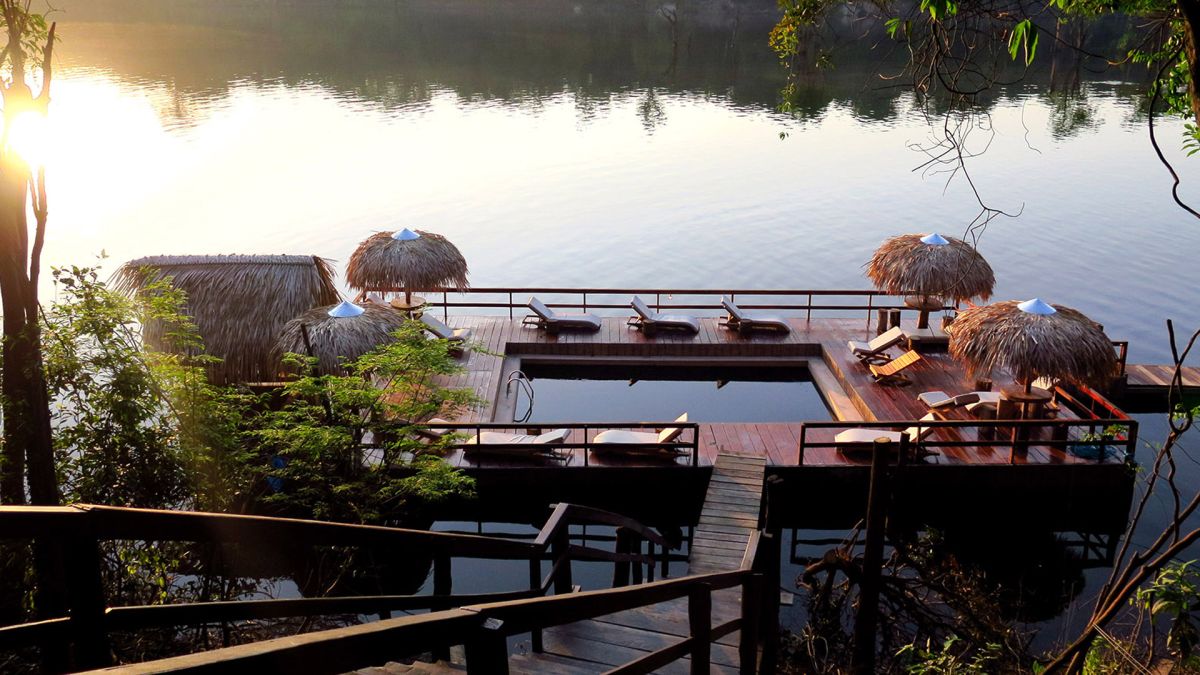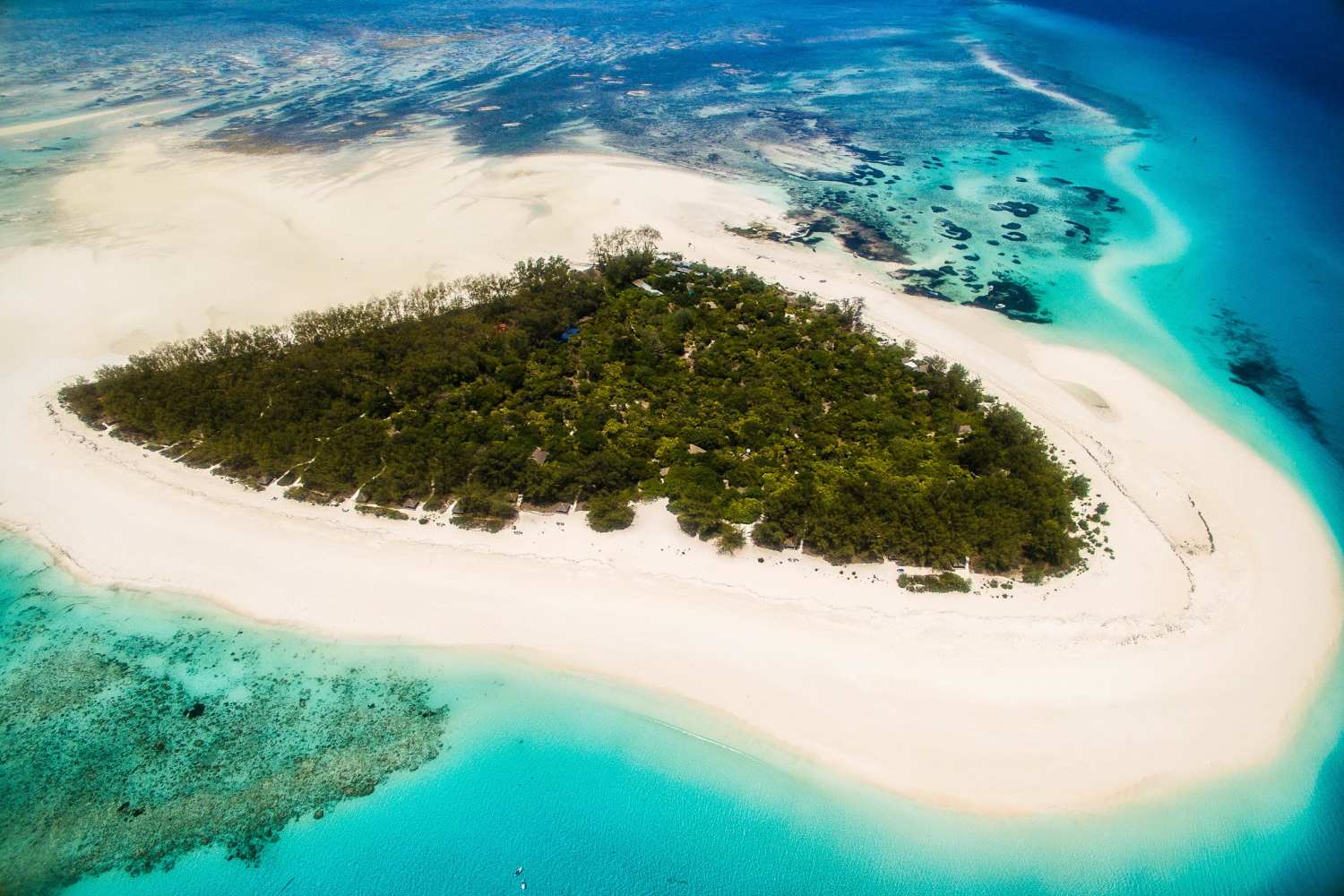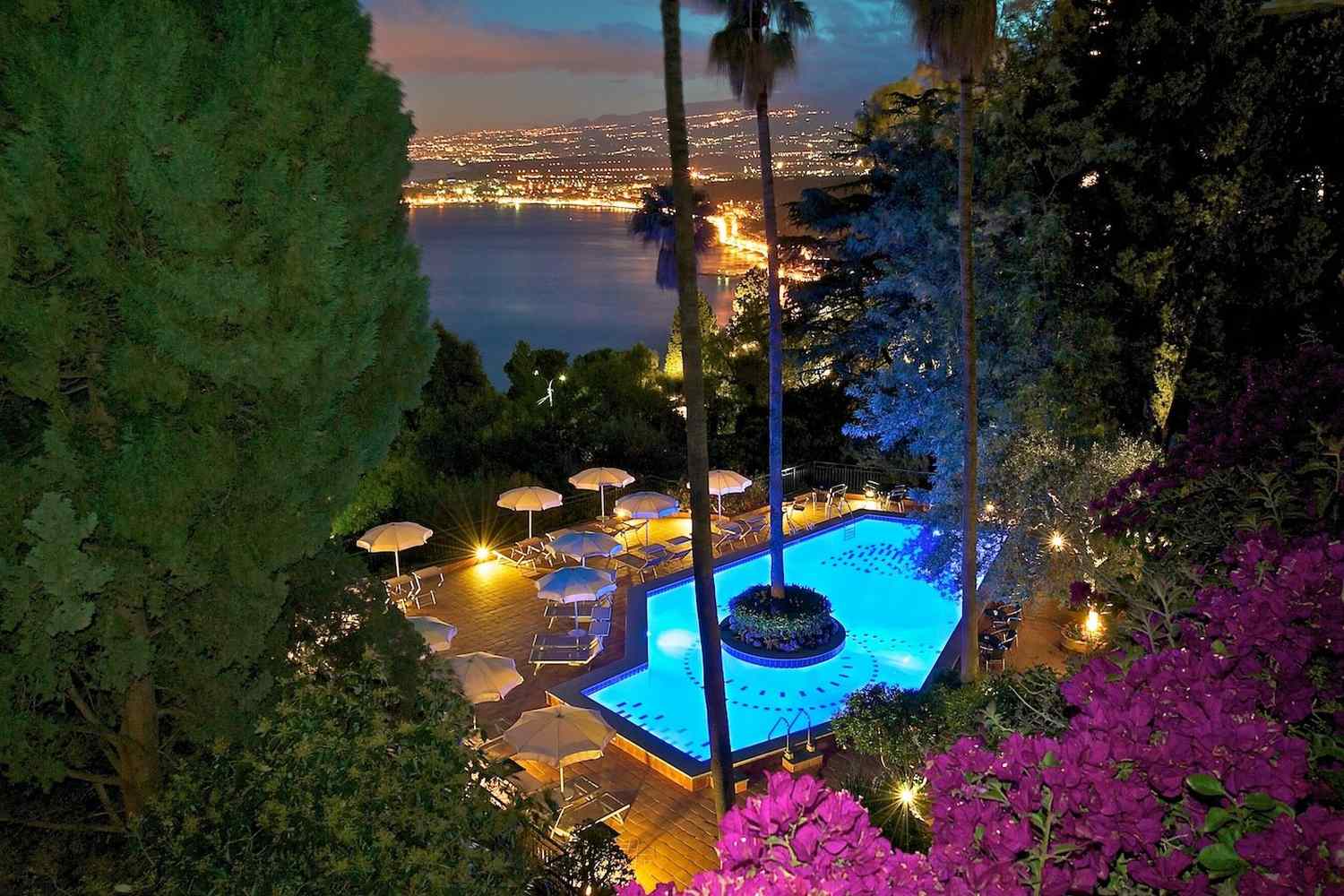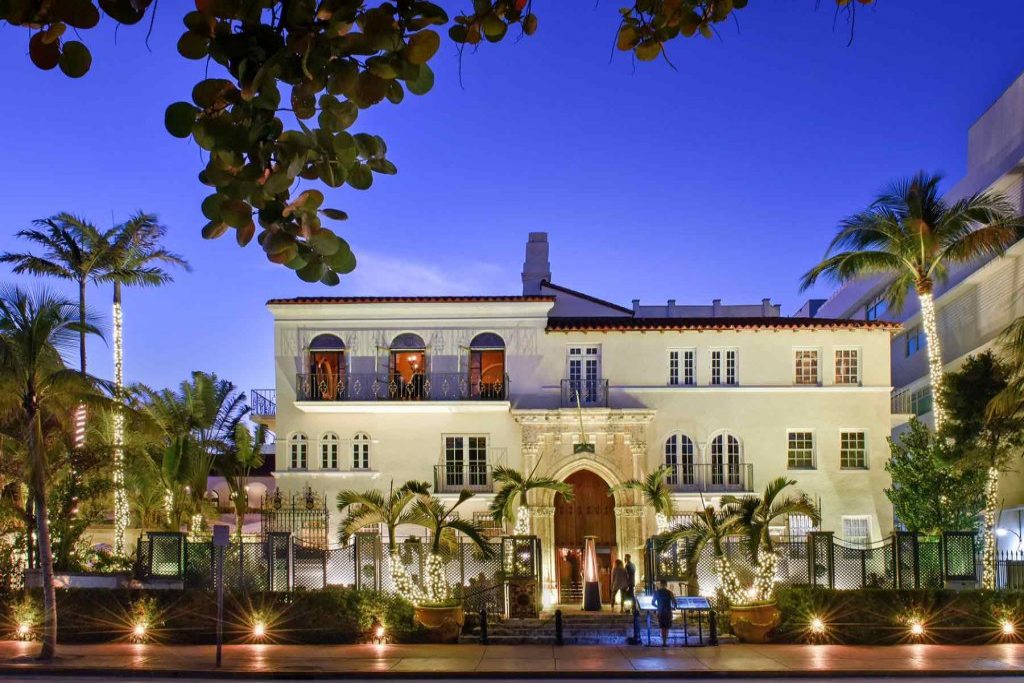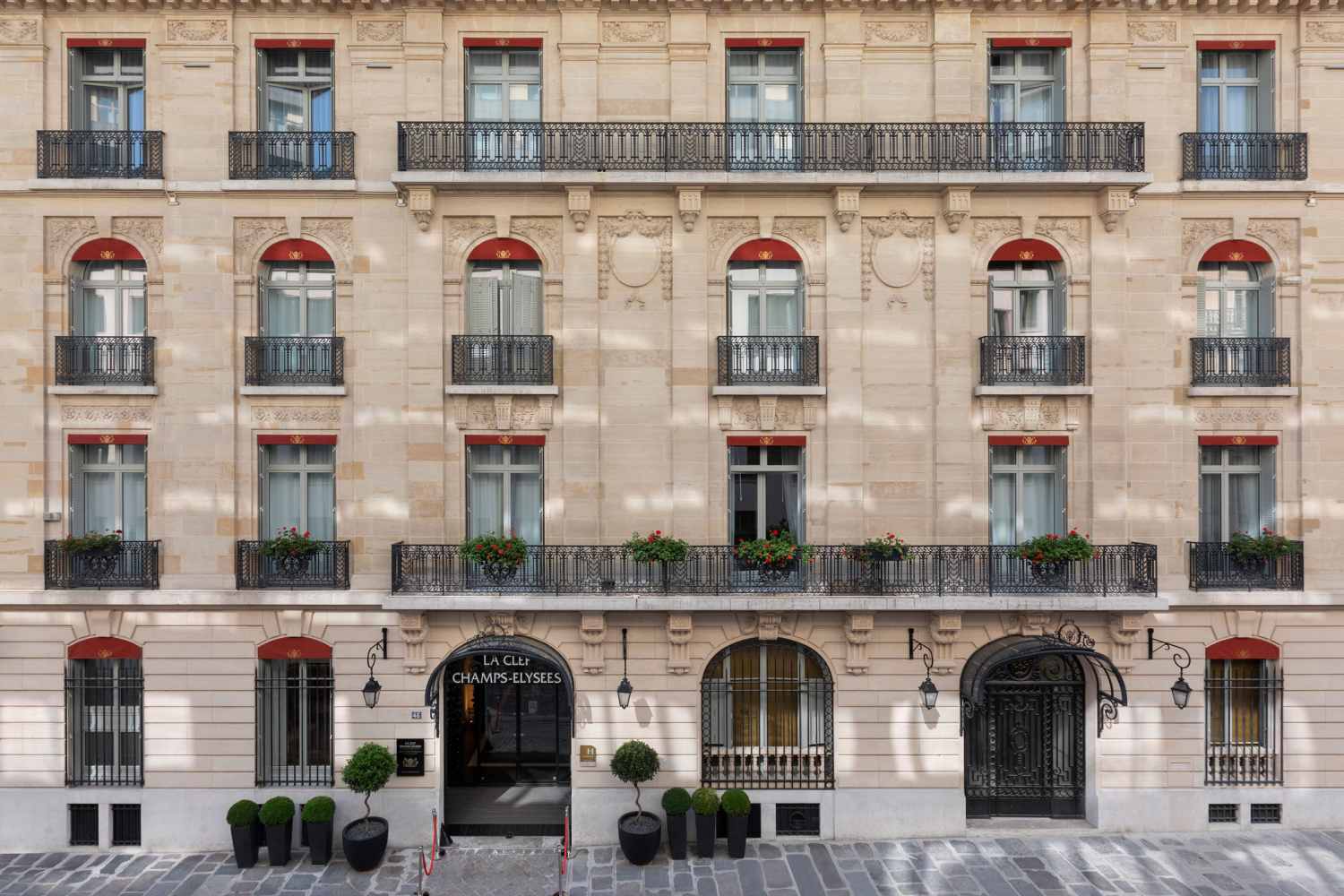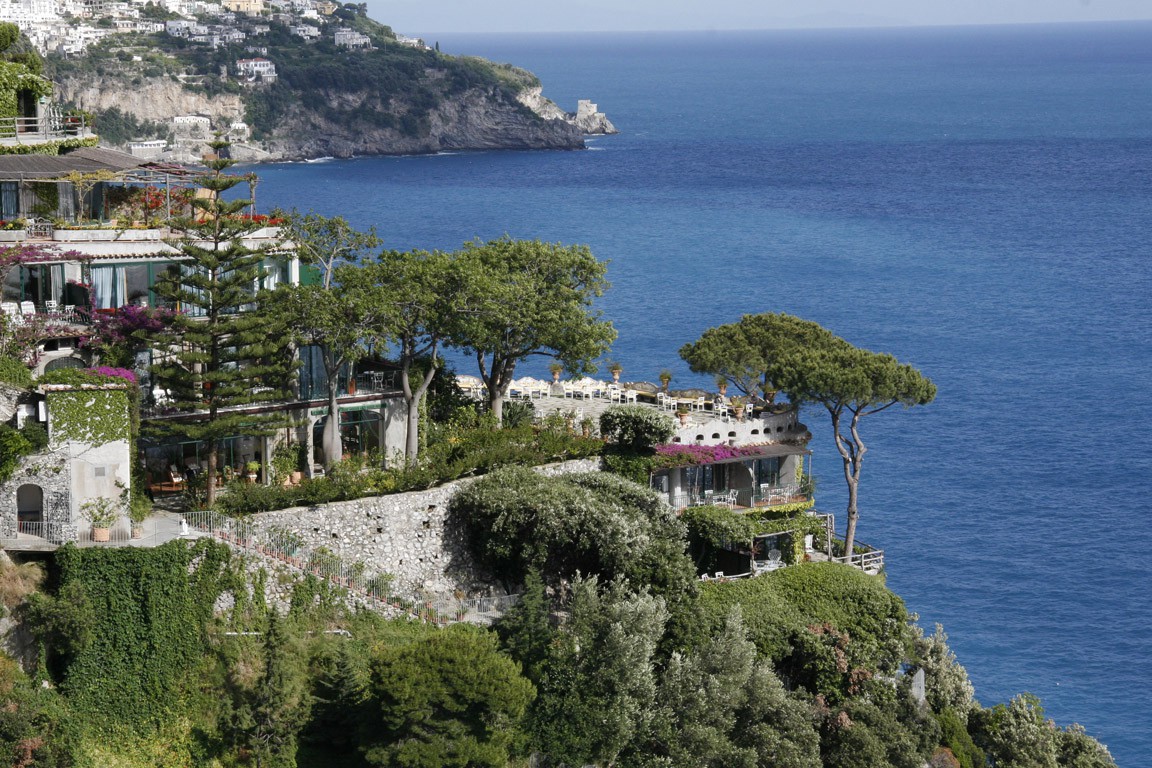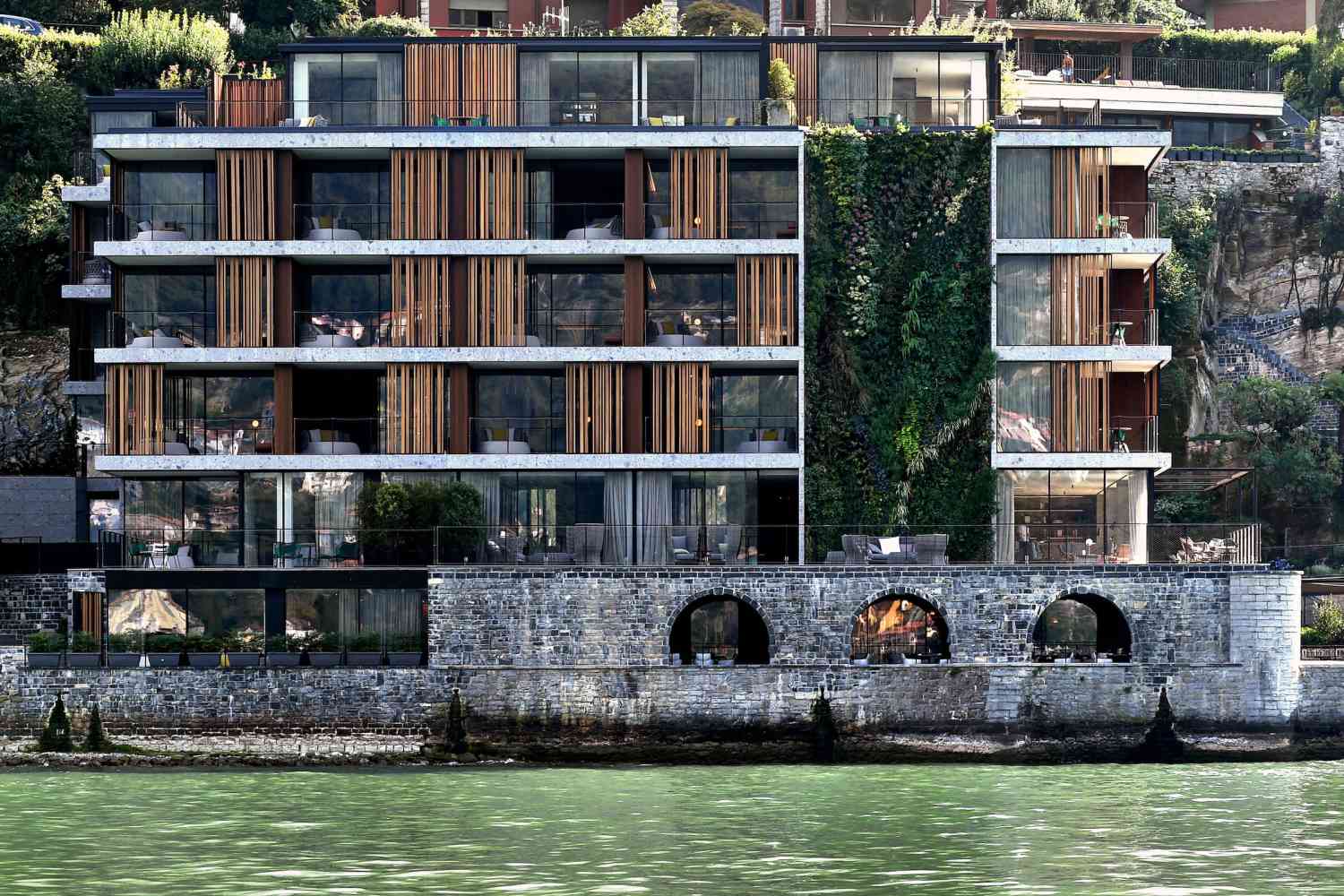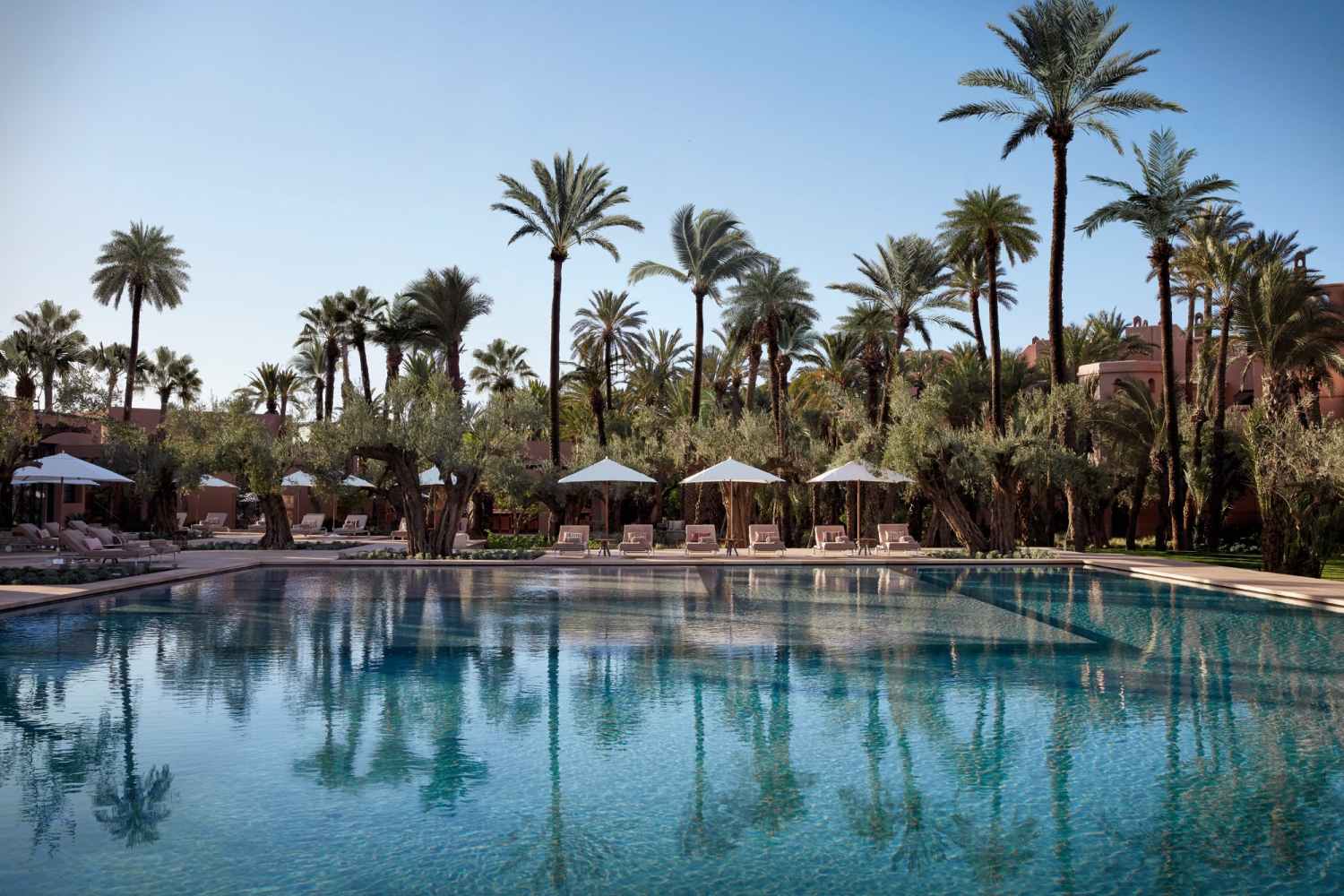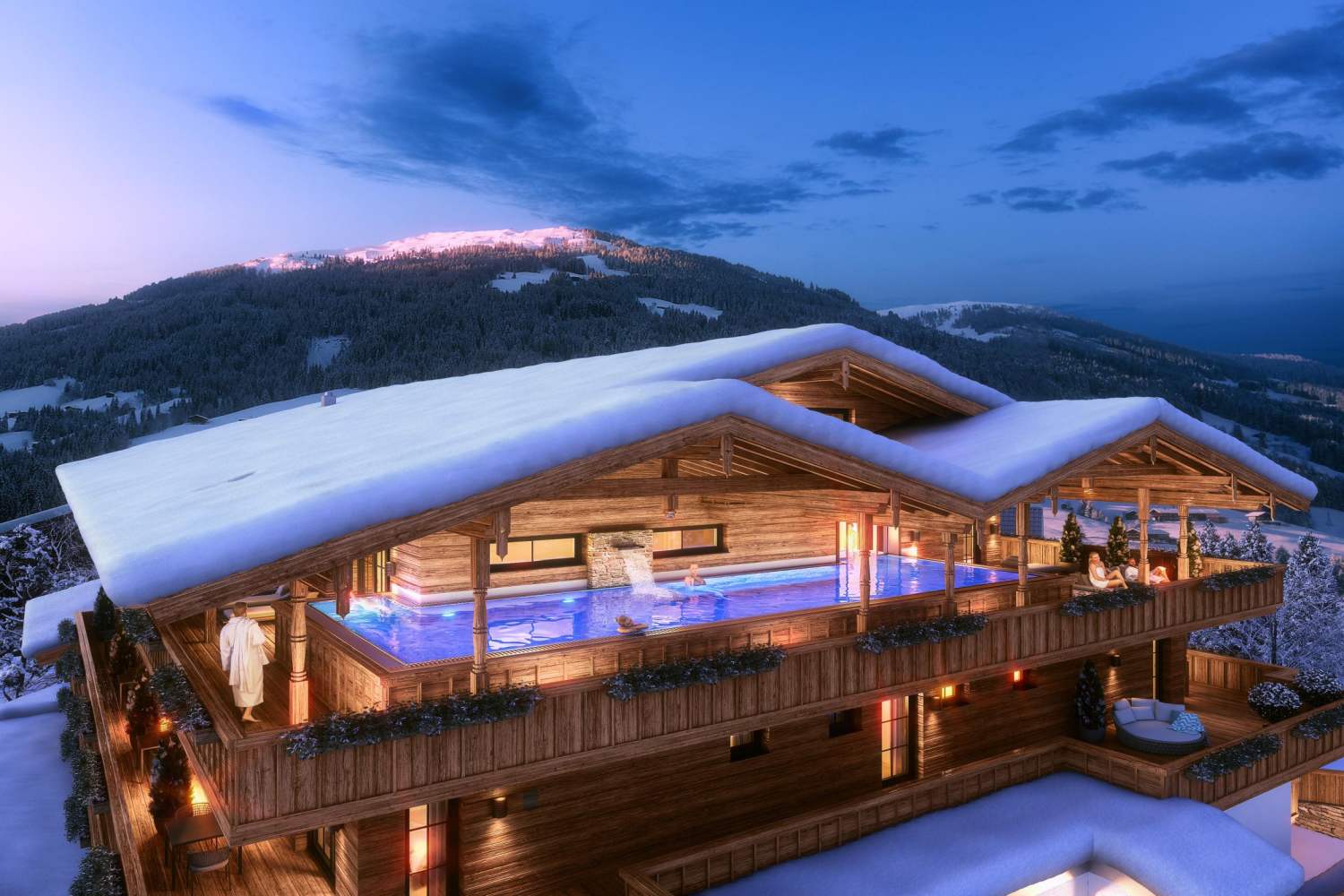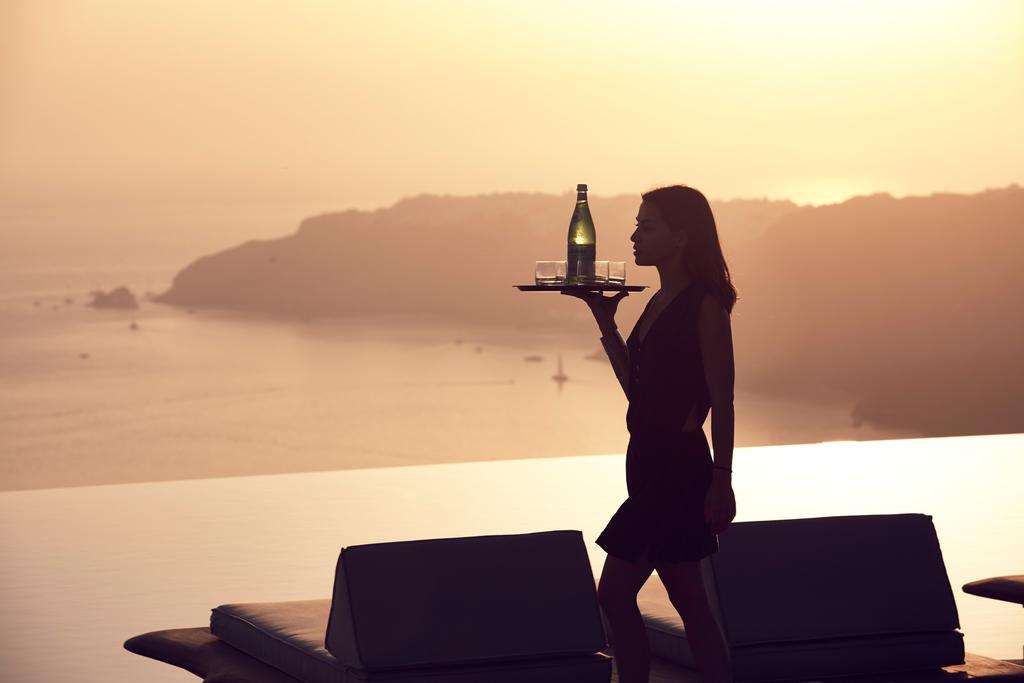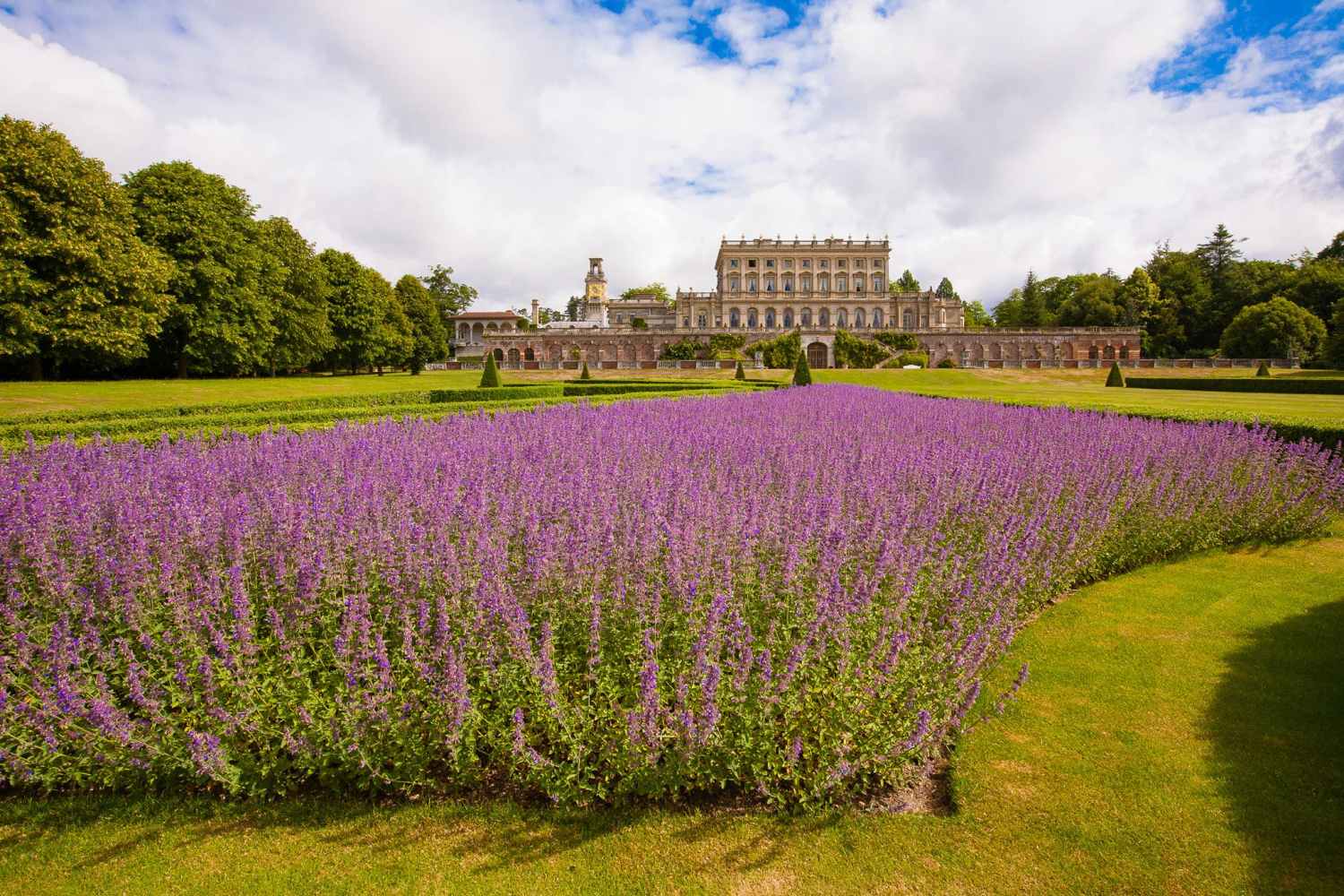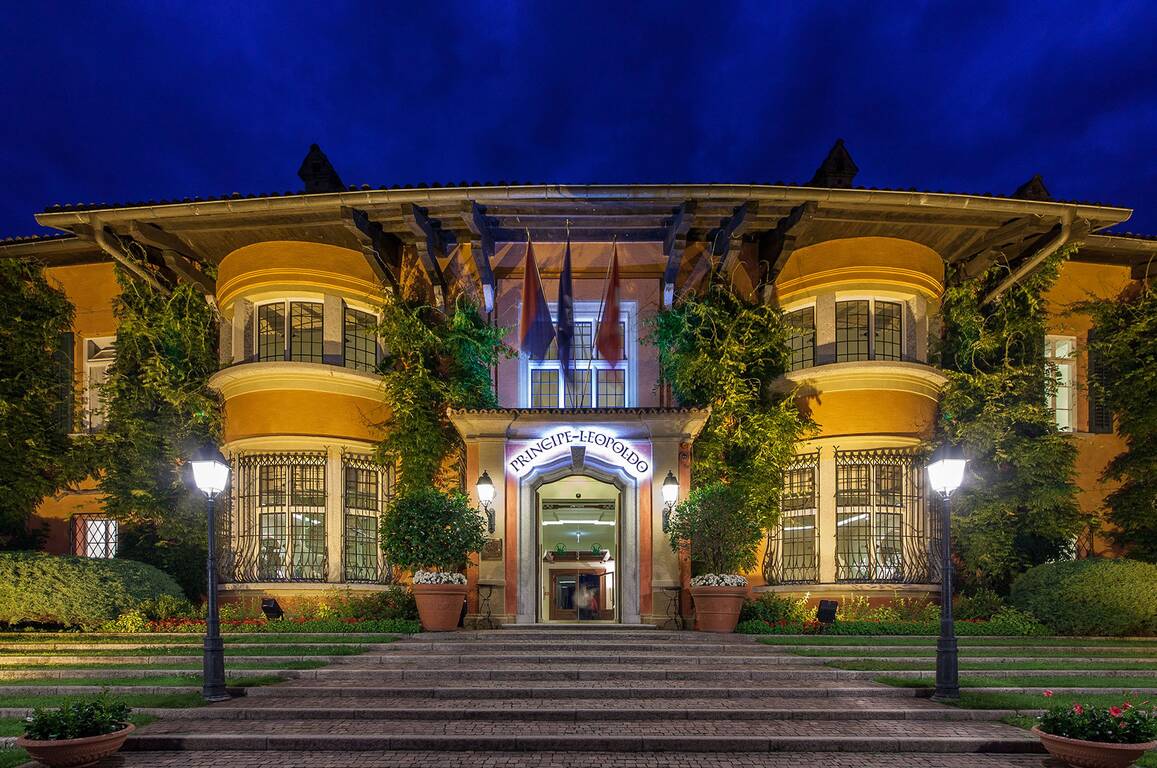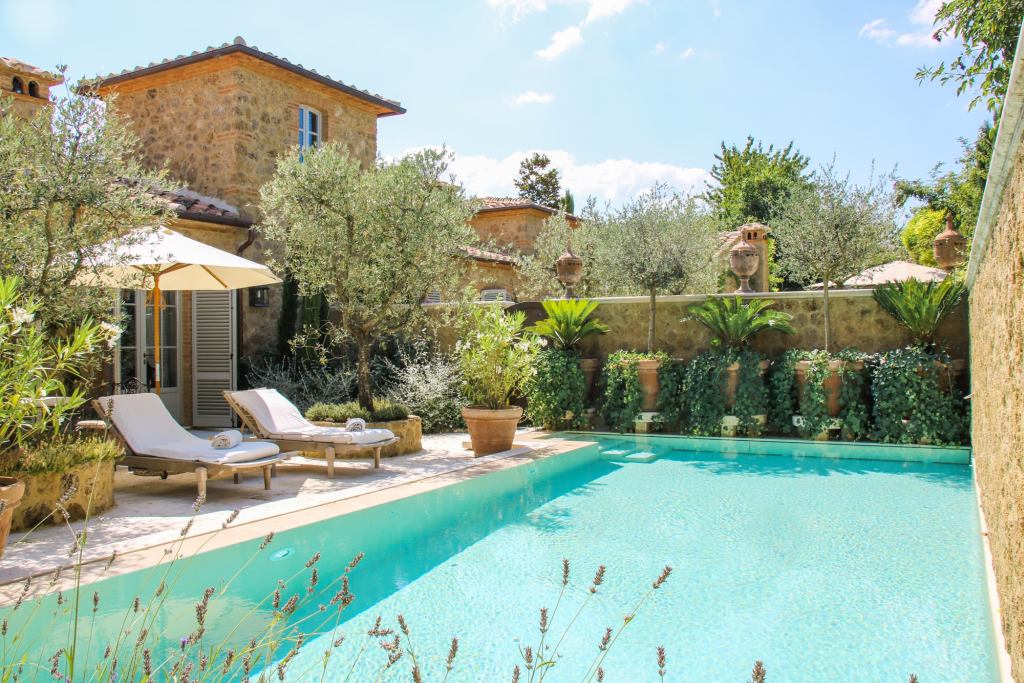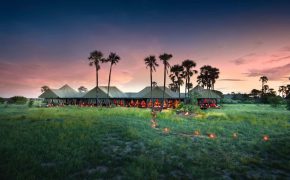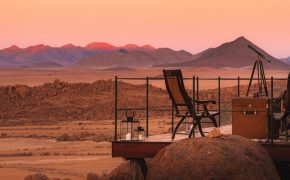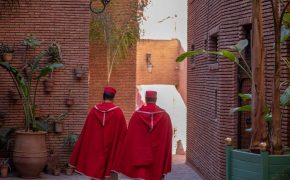Huab Lodge, situated in Damaraland Namibia, began as an idea to generate funds to save Namibia’s desert–dwelling elephants from being harassed and shot. Since 1992 awareness has increased, as has tourism and the “value” of the elephant is changing.
The original farmland is a small, unique area called Monte Carlo which boasts stunning views bisected by the mostly dry Huab River. The former rest camp which accommodated tourists in the 1970s now houses the lodge’s staff.
At a special site just down river from the old rest camp, where the Germans built the so-called German Bath in the late 1800s, Huab Lodge was erected. Despite its size the unique main building blends well into its surroundings.
The irregular thatch roof mirrors a mountain on the opposite bank. The lodge’s stone and thatch bungalows spread along the elevated north bank of the river ensuring a private and magnificent view – even from the shower!
Huab Lodge with all it has to offer and being off the beaten track is not a place for a single night-stop. You should allow several days to enjoy and absorb the tranquillity and quiet, the welcoming and comfortable atmosphere, and the many activities at the lodge. There is an airstrip directly nearby the lodge.
THE HISTORY
Huab Lodge, built at a special site just down river from the old rest camp which accommodated tourists in the 1970s, and where the German occupiers built the so-called ‘German Bath’ in the late 1800s, is situated on a private nature reserve right on the edge of Namibia’s ‘Damaraland’, a ruggedly beautiful area in North West Namibia, famed for its populations of desert-adapted elephants and lions, as well as other iconic Namibian wildlife like black rhinos, zebra, gemsbok (oryx), and more.
It was in fact a desire to help generate funds for the conservation of these elephants that led to the founding of Huab Lodge, and that desire still forms part of both the philosophy and practice of the lodge.
When the founders of Huab Safari Ranches, a merging of commercial and communal land, first came across this part of the Huab Valley in 1992, and learned of the plight of the elephants, they founded the private nature reserve to act as a buffer between the elephants and other wild animals and neighbouring farmers, with whom conflict could have easily occurred.
The ephemeral Huab River, which runs through the 20-thousand-acre nature reserve, provides numerous natural water sources which attract wildlife and the once severely overgrazed farmland, having been completely given over to wildlife, is returning to its once pristine condition.
Indigenous flora can once again proliferate and provide food and refuge for the wildlife, birds, insects, and reptiles of the area. The last three decades of care, and a strict ‘hands-off’ and ‘no-shooting’ policy, have also brought about remarkable changes, with the number of kudu, oryx, mountain zebra, and springbok resident in the area rebounding.
ACCOMMODATION
Despite its size, the unique main building blends well into its surroundings, with the irregular thatch roof mirroring the mountain range on the southern banks of the river. Open on all sides, natural rock islands protrude into the main lapa area, and at the rear, the bar offers striking views of the swimming pool, and along the river valley.
A newly built reception area next to the main lapa offer guests the opportunity to book activities, discuss their itinerary, and find out anything else they wish to know. In keeping with the ambiance at Huab, meals are enjoyed at a family table.
Here it’s about making friends, exchanging opinions, kicking off your shoes, and making yourself at home. A variety of less wellknown South African wines are presented with dinner, for guests to appreciate and enjoy.
Huab Lodge is located at the end of a 35km off the beaten track cul de sac, making it the ideal place to stop over for two nights or more. In fact, giving yourself several days to enjoy and absorb the tranquillity and quiet, the welcoming and comfortable atmosphere, and the many activities at the lodge, is highly recommended.
For those who do not wish to drive themselves, there is an airstrip in close proximity to (1km) the lodge and guests who fly in are picked up and chauffeured to the lodge and back.
Huab Lodge’s eight spacious, extensively refurbished, stone and thatch bungalows – accommodating a maximum of 16 guests – are spread along the elevated north bank of the river ensuring a magnificent and private view of the Huab River Valley, even from the shower!
Each bungalow has a large private patio and is tastefully furnished with two extra-long double beds. Large windows and sliding doors allow in both light and a view across the Huab. There is in fact no need to even close the curtains – rather watch the stars and listen to the calls of owls and barking geckos as you drift off to sleep.
The Lodge provides 24-hour 220-volt power thanks to a silent solar energy plant concealed on the hill, and the chemically untreated water has a neutral pH value.
Each bungalow is equipped with mosquito nets and a ceiling fan, and while there are no coffee and tea facilities inside the rooms, an early morning beverage can easily be arranged should guests request such. Huab Lodge also has a bungalow with limited facilities for physically challenged guests.
THERMAL SPRING
At Huab Lodge you can take a plunge in our swimming pool and day-dream on the deck chairs and pool beds while watching the colourful birds at the birdbath, or enjoy the soothing benefits of the natural thermal spring which bubbles up out of the ground at about 60 degrees Celsius but is maintained in the ‘bath’ at between 37 and 40 degrees.
The thermal bath is located beneath a sweeping thatched roof below a granite kopje (hillock), typical of the area. The roof is cut away so the southern skies are visible when lounging at night, listening to the jackals, owls, and barking geckos while taking advantage of the soothing and restorative nature of the minerals in the water.
EPHEMERAL RIVER DRIVE
From the lodge, you depart in the direction of the ephemeral Huab River, passing Khorixas, towards the petrified forest where large tree trunks have, over millions of years, “turned to stone”. A packed breakfast is enjoyed en route under a huge sandstone mountain, from where the journey continues towards the Huab River.
After turning into the Huab we will stop for a mid-morning snack along one of its tributaries and discuss the plans for the day. With fences having, for the most part, been removed in the Damaraland area, the desert-adapted elephant are free to roam the entire area and the morning/mid day will be spent exploring both the Huab and Aba-Huab rivers, in search of these magnificent behemoths.
At lunchtime, we will find a shady spot to stop and have a bite, before starting the slow meander back to the lodge, stopping off at some unusual and unique sites along the way, aiming to return to the lodge before sunset
SCENIC & SUNDOWNER DRIVE
A drive is offered in a game viewer vehicle, departing the lodge after breakfast to explore the nature reserve and the beauty of the morning. Another drive is offered in the late afternoon, taking in the magnificent Namibian sunset, along, of course, with the obligatory sundowner
WALKING & HIKING IN NAMIBIA’S DAMARALAND
Early morning walk offered either before or after breakfast, the best time to do these walks is before the sun reaches its zenith as, even in winter, temperatures can rise to 30 degrees during the day and most animals prefer to find shelter during that time of the day. Longer walking routes for the fitter, or more adventurous guest, can be offered though.
Hiking trails for the adventurous can be done with a over night wild camping in the Huab river. For more info on this please send an email to info@huab.com for a tailer made hiking experience.
UNIQUE ROCK ART
At Huab Lodge there are several more activities to do. Nowhere else in Namibia will you find more rock paintings than in the Damaraland Region. Some shards and old tools can be found that were used by the San people hundreds of years ago.
STARGAZING IN NAMIBIA
If you are interested in stargazing just before the sun comes up is often a good time. Because of the remote location of the lodge there is no light pollution at night which gives you the opportunity to have a better view of the stars than anywhere else in the world.
There is a telescope available so you can take a look at Saturn’s rings or Jupiter’s moons or wonder at the bright colours of the Jewel Box in the Southern Cross.
NAMIBIA FOR PHOTOGRAPHERS
So many photographers come to Namibia to experience and photograph its vast landscapes and pristine scenery. And it is the same for the birds. Not only bird watchers but bird photographers come to Huab Lodge to take pictures of some birds you won’t find as easily anywhere else.
BIRDWATCHING IN NAMIBIA
Huab Lodge in Damaraland Namibia has become a Mecca for bird watchers and photographers. When you sit back in your favourite armchair and start day-dreaming of a relaxing, tranquil place where you could get away from the stresses of your life, you invariably imagine a sparkling, sunny day with bird song and the sound of running water, rustling grass and wind in the trees … birds are the choir of the wilderness announcing every dawn and singing till evening, filling the world with music, life, colour, magic and the freedom of flight … filling our imagination.
Huab Lodge is ideally situated in granite hills on the banks of the ephemeral Huab River in habitats where several endemic or near endemic Namibian bird species occur, which makes them easy to see.
Amongst its 210 bird species, the area boasts 9 of the endemic desert bird species including Hartlaub spurfowl, Rüppel’s parrot, southern violet wood-hoopoe, Monteiro’s hornbill, Carp’s tit, Barecheeked babbler, Damara rockrunner and White-tailed shrike, and many mammals and reptiles that are of particular interest in the semi-desert environment at Huab Lodge.
Late September the Olive bee-eater arrives to breed in Namibia and delight us with his call and brilliance, staying until mid April. The violet-backed starling, the rosy-faced love bird and the boisterous bare-cheeked babbler can be seen from camp. There is a hide just below the main house for bird watching and photography.
